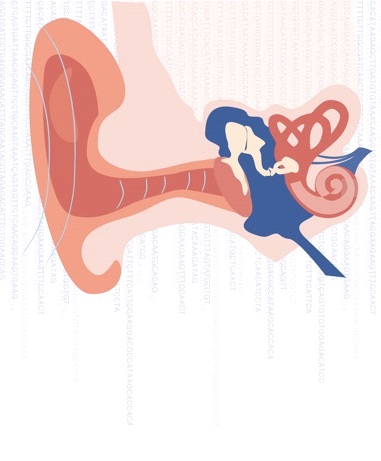A discovery by researchers from Tel Aviv University and the University of Maryland is a breakthrough in understanding the causes of hearing loss * The researchers found a protein whose absence causes the process of hearing loss. The discovery is expected to pave the way for the development of appropriate medical treatments

The problem of hearing loss in old age is getting worse in the western world with the increase in life expectancy, and today almost 50% of people aged 70 and over suffer from it. A new study carried out in collaboration between the medical schools of Tel Aviv University and the University of Maryland may help develop future technology to restore hearing to these people, as well as to other hearing impaired people.
A number of researchers who graduated from the Faculty of Medicine of Tel Aviv University worked together in the study: Dr. Rona Hertzano, head of the Deafness Research Laboratory and expert in hearing diseases and surgeries to restore hearing at the University of Maryland School of Medicine in Baltimore, Dr. Rani Elkon, expert in bioinformatics at the School of Medicine of Tel Aviv University, and Dr. Efrat Eliyahu, an expert on cell death and survival and head of a laboratory at the Mount Sinai Hospital School of Medicine in New York.
The research was published this month (October 2015) in the journal Nature Communications.
Why do hair cells die?
"The well-known phenomenon of hearing loss in old age is mainly due to the loss of hair cells - the cells that activate the auditory nerve in the inner ear," explains Dr. Alkon. "The normal functioning of these cells depends on the proteins needed for their specific activity, and on additional proteins that protect them from cell death. Therefore, in order to find out what causes the hair cells in the ear to die, we initially sought to identify the genes that lead to the creation of those proteins, which are responsible for the integrity of the cells and their survival over time."
For this purpose, the researchers isolated different cell populations from the ears of laboratory mice, and applied an experimental procedure called 'gene expression profile testing'. In this way, they were able to identify which genes from the entire mouse genome are specifically activated in the hair cells in the ear. This phase of the work was carried out at the Genome Research Center of the University of Maryland, under the guidance of Dr. Hertzano, and its results were forwarded to Dr. Alkon at Tel Aviv University, who processed the data using computational means.
"With the help of bioinformatic analysis, we identified in the mouse genome 'operating instructions' that distinguish genes that are expressed but only in the hair cells in the ear," says Dr. Alkon. "We compared our findings to existing databases, which link sequences of letters in DNA and proteins that control gene expression, and we discovered a clear connection between the genes expressed in the hair cells and the protein called RFX. This is a known control protein, whose function is associated with other organs in the body, but so far has not been linked to hearing functions." The obvious hypothesis was that the RFX protein plays an important and unique role in the hair cells, and that its normal activity is essential for hearing.
Later, the researchers sought to confirm their hypothesis through laboratory experiments. To this end, Dr. Haretzno created a model of RFX-free mice in hair cells in the ear, and tested their hearing. Her findings confirmed the results of the computational study: these mice were born with hair cells that looked normal, but already at the end of the second week of their lives, the time when healthy mice begin to hear, the hair cells in their ears began to die and disappear, and the model mice became deaf.
Finally, in order to characterize the death process of the hair cells, cells extracted from the ears of RFX-free mice were transferred to Dr. Eliyahu's laboratory at Mount Sinai Hospital. Here the test revealed an increase in the level of proteins involved in the process called 'planned cell death', and at the same time a decrease in the amount of proteins responsible for cell survival. Now the researchers predict that understanding the mechanism that causes hair cells to die will help in the development of future treatments to restore hearing.
Dr. Hertzno summarizes: "The conclusion from our research is that the regulatory protein RFX is essential for keeping the hair cells in the ear alive. This discovery is extremely important for the development of innovative treatment methods, which are already being tested today, such as the production of hair cells in test tubes for the purpose of transplanting them into the ear. Our research shows that the expression of the RFX protein is essential for the success of the proposed treatment, since in its absence the hair cells will die in a short time.

One response
And what about ringing in the ears?